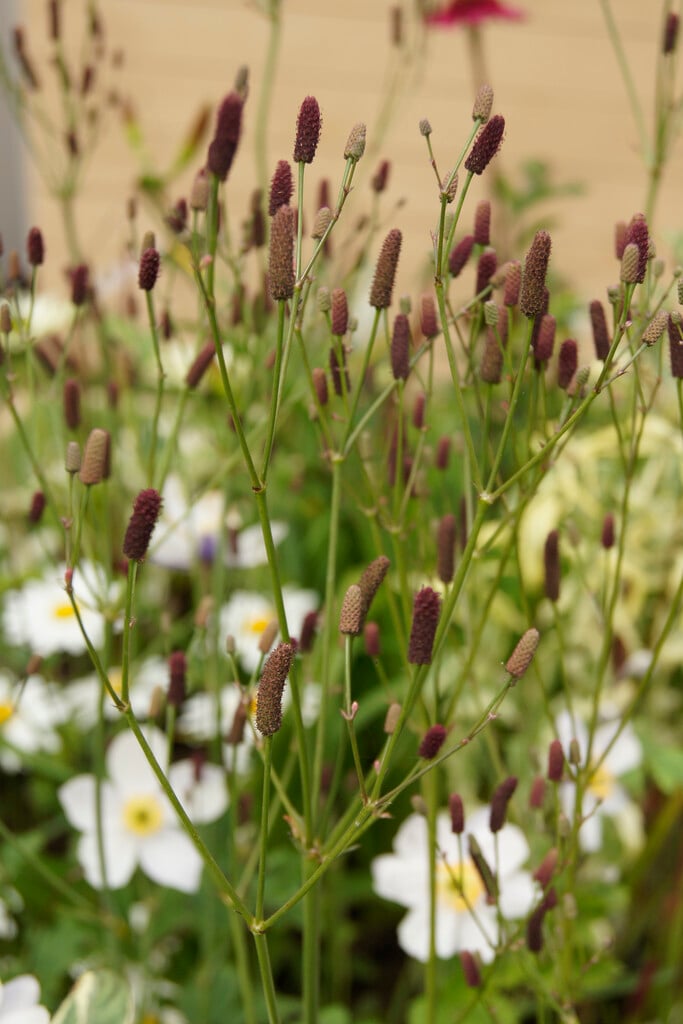Eryngium ebracteatum var. poterioides
burnet-flowered eryngo
An erect, evergreen perennial, up to 1.5m tall, with strap-shaped, spiny, grey-green leaves. In summer and autumn the widely-branching, wiry stems bear many reddish-brown, cone-shaped flowerheads, each up to 3cm long
Size
Ultimate height
1–1.5 metresTime to ultimate height
2–5 yearsUltimate spread
0.5–1 metresGrowing conditions
Moisture
Well–drainedpH
Acid, Alkaline, NeutralColour & scent
| Stem | Flower | Foliage | Fruit | |
| Spring | Green Grey Silver | |||
|---|---|---|---|---|
| Summer | Brown Red | Green Grey Silver | ||
| Autumn | Brown Red | Green Grey Silver | ||
| Winter | Green Grey Silver |
Position
- Full sun
Aspect
South–facing or West–facing or East–facing
Exposure
Exposed or ShelteredDrought resistance
Yes Hardiness
H4Botanical details
- Family
- Apiaceae
- Native to GB / Ireland
- No
- Foliage
- Evergreen
- Habit
- Clump forming
- Genus
Eryngium can be annuals, biennials or perennials with simple or divided leaves, often spiny edged, and cone-like flower-heads often surrounded by an involucre of conspicuous spiny bracts
- Name status
Correct
How to grow
Cultivation
Grow in well-drained, moderately fertile or poor soils in full sun
Propagation
Propagate by seed or by division
Suggested planting locations and garden types
- Coastal
- Cottage and informal garden
- Wildlife gardens
- Flower borders and beds
- Cut flowers
Pruning
Cut back flower stems after flowering
Pests
May be susceptible to leaf and bud eelworms, and slugs and snails
Diseases
May be susceptible to root rot and powdery mildews
Get involved
The Royal Horticultural Society is the UK’s leading gardening charity. We aim to enrich everyone’s life through plants, and make the UK a greener and more beautiful place.
